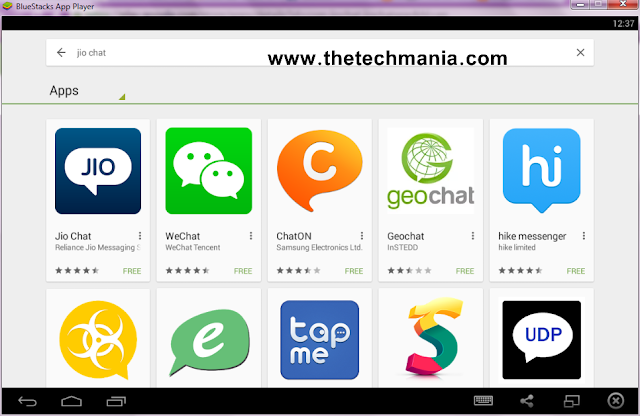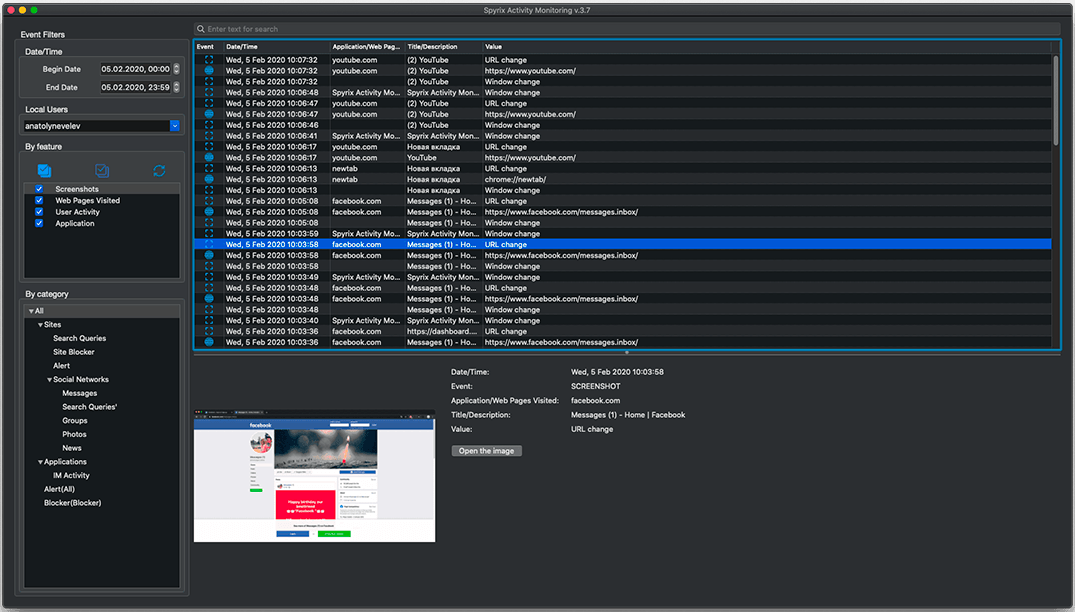Get A List Of All The Mac Store Apps Installed On Your Mac OS X Tips By Rob LeFebvre. 6:00 am, October 9, 2013 Ever want to get a quick and dirty list of the Mac App Store apps that you have. These are 10 applications we wish made the jump from Windows to Mac to make it a better place. Macs are their own little universe of hardware, design, and software. It's an incomplete universe. The System Information app has a tab for showing every.app file installed on your system. Open the app by holding down the Option key and clicking on the Apple logo; the first item will be System Information. Scroll down to Software Applications and give it a minute to search your disk and populate the list. This list contains every.app.
If I want to install an app that is visible and useable only to me in my admin account, can that be done? Or do I have to be working from a nonadmin account to install apps visible only to me?
Any clarification would be helpful and appreciated!
Thanks,
Steve M.
iMac 21.5 inch, 3.06 GHz, 4GB RAM, 1TB HD, Mac OS X (10.6.4), OWC Mercury Elite 1 TB HD (FW/USB), APC UPS
Posted on
Last updated on February 14th, 2019
If you 're looking for a way to view all the installed apps and programs, on your Windows 10 PC, from PowerShell, then continue reading below. All Modern Apps in Windows 10 & Windows 8 (8.1), are installed through installation packages. An app installation package is a unique file that contains all the files needed to install a Modern App. In order to re-install or uninstall a specific app, you need to know it's Name or the installation package full name (PackageFullName) that is used to install the app.
In this tutorial I 'll show how you can get a list of all programs or apps installed (with their full installation package name) on your Windows 10 or Windows 8.1 & 8 computer by using PowerShell commands.
How to view all Installed Programs, Apps or Packages on Windows 10/8/8.1
Step 1. Open PowerShell with Administrative privileges.
1. At Cortana's search box, type powershell *
* Note: On Windows 8, 8.1: Press the 'Windows' + 'S' keys to open the search box and type powershell.
2. Right click on Windows PowerShell on the results and select Run as administrator.
Step 2. View Installed Programs, Apps & Packages.
A. How to View all Installed Programs on a Windows 10 PC.
B. How to View all Installed Store Apps & Packages in Windows 10.
A. How to View all Installed Programs on Windows 10.
If you want to view a list of all the installed applications in Windows 10, use one of the following methods:
Packages and documentation are available from.PyQt is another popular cross-platform GUI toolkit that runs natively on MacOS X. Update python on mac. An Aqua-native version of Tk is bundled with OSX by Apple, and the latest version can be downloaded and installed from; it can also be built from source.wxPython is another popular cross-platform GUI toolkit that runs natively onMac OS X. Information on PyObjC isavailable from.The standard Python GUI toolkit is, based on the cross-platformTk toolkit.
Method 1: List Installed Programs by using 'WMIC' command.
1. In PowerShell (admin) type the following command and press Enter.
- wmic


2. At 'wmic:rootcli>' prompt, type:
- product get name, version, vendor
– Alternately, if you want to view the installed programs on a domain computer, give the following command:
- /node:ComputerName product get name, version, vendor
*Note: where ComputerName = The Name of the Computer. e.g.: If the name of the computer is 'Cougar', then the command will be:
TIP: To copy the output of the command (list of installed programs) to another application (e.g. in Notepad), then:
1. Click anywhere inside the PowerShell window and CTRL + A to select all.
2. Press CTRL + C to copy the results in the clipboard.
3. Open the application you want to copy the list of programs, and press CTRL + V to paste them.
Method 2: View Installed Programs by using the 'Get-WmiObject' command.
In PowerShell (admin)type the following command and press Enter:
How to a mac app with sudo. How can I run a script or app as sudo with a click? Ask Question Asked 6 years ago. Active 6 years ago. Viewed 2k times 0. I have a certain program that doesn't work right unless I run it as sudo. Cannot Run Sudo After Mac Sierra Upgrade. How to run `hping` without `sudo` 3. Closing Terminal window does not kill script run with sudo. Create your Sudo. Use your Sudo for sign-ups, downloads or anytime you need to provide a phone number and/or email address. For easy identification. Simply access your Sudos from your smartphone app without worrying about login and passwords. You can also create an iTunes or iCloud back up of your MySudo account which can be. A flaw with the Sudo command used in macOS Terminal let non-privileged users and programs run commands as Root. It was patched in version 1.8.31 which was released with macOS High Sierra 10.13.6.
- Get-WmiObject -Class Win32_Product
B. How to View all Installed Apps & Packages in Windows 10.
Part 1. How to View the Installed Windows 10 Apps & Packages for All Users.
A. If you want to view a simple list* of the installed Microsoft Apps for all the users on a Windows 10 PC, give the following command in PowerShell (admin):
- Get-AppxPackage -AllUsers | Select Name, PackageFullName
* Note: The output of the above command will be a list with two (2) columns (see screenshot below). Under the 'Name' column will be displayed the full name of the Microsoft App (Name) and at the second column (PackageFullName) is displayed the Full Package Name.
TIPS:
1. If you want to copy & paste the Name or the PackageFullName to another location (e.g. to a PowerShell command), just double-click on it until highlighted, and use Ctrl+C and Ctrl+V keyboard commands to do your job.
2. If you want to copy the full list of installed apps to another application (e.g. in Notepad), then:
1. Click anywhere inside the PowerShell window and CTRL + A to select all.
2. Press CTRL + C to copy the results in the clipboard.
3. Open the application you want to copy the list of programs, and press CTRL + V to paste them.
B. If you want to view a more detailed list* of all the installed Microsoft Apps for all the users on a Windows 10 PC, give the following command in PowerShell (admin):
- Get-AppxPackage –AllUsers
* Note: The output of the above command will be a more detailed report for all apps installed (see screenshot-2), that contains additional information for each installed package. (e.g. the installation location of the package).
Part 2. How to View the Installed Windows 10 Apps & Packages for a Single User.
A. If you want to view a simple list, containing all the Windows Store Apps & the installed packages for a specific user account, give the following command in PowerShell (Admin):
- Get-AppxPackage –User UserName | Select Name, PackageFullName
* Note: Where UserName isthe account name of the user that you want to view the installed apps.
Mac List Installed Apps Download
B. If you want to view a more detailed list of all available Microsoft packages for a specific user account, type the following command:
- Get-AppxPackage –User UserName
* Note: Where UserName isthe account name of the user that you want to view the installed apps.
Mac List Installed Apps Downloads
Example No 1: If you want to view all the installed apps for the user 'User1' on your personal (local) computer, then you have to type this command in PowerShell (Admin):
Can't Install App On Mac
- Get-AppxPackage –User User1 | Select Name, PackageFullName
Example No 2: If you want to view all the installed apps of domain computer/user type the 'Get-AppxPackage' command in the following format:*
You use the Info window to view or change information about photos. In the Photos app on your Mac, double-click a photo to view it, then click the Info button in the toolbar, or press Command-I. Edit any of the following: Title: Enter a name in the Title field. Thumbnail app download.
- Get-AppxPackage –User DomainNameUser1 | Select Name, PackageFullName
* e.g. If the Domain Name is 'WINTIPS' and the domain user is the 'User1', then the command should be:
- Get-AppxPackage –User WINTIPSUser1 | Select Name, PackageFullName
That's it!
Let me know if this guide has helped you by leaving your comment about your experience. Please like and share this guide to help others.